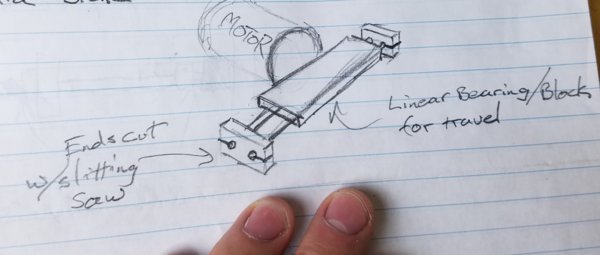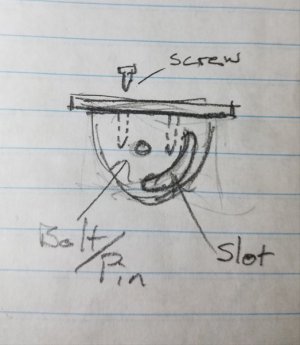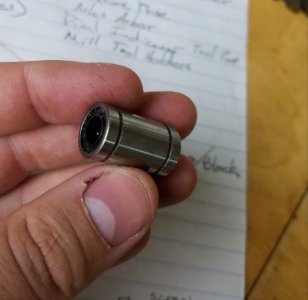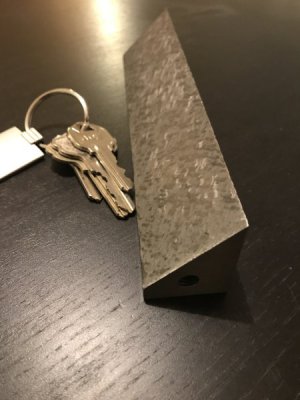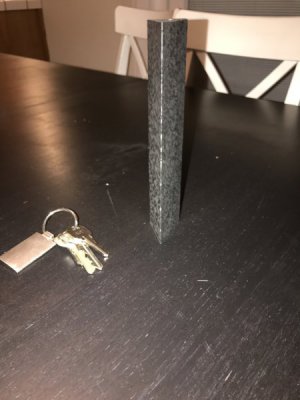Thoughts on the process: the actual scraping
There is a bit of a rhythm to scraping: scrape off the high spots, stone the burrs down, dull the surface with yellow, prep the plate with an ink brayer (one tool I forgot), blue up the part, repeat.
The only optional step is dulling the surface with red or yellow ink, and it's only optional during the initial roughing, in my opinion.
Scraping is not hard. Anyone can learn the knack, but there is no substitute for several hours of practice. Getting a part roughly flat to 5 or 10 PPI over the surface is particularly easy once you get the hang of it. Finishing is much harder, but is all about evenness of strokes and consistent depth of scrape. It's kinda like learning how to strum a guitar with a pick. It looks deceptively easy (and it is when you acquire the knack) but it takes an awful lot of practice before you get very good at it.
I'm convinced I can actually feel the blade clipping off a high spot when I hit my mark just right, which is pretty amazing when you consider how little metal you're removing (just a couple tenths!). Your fingers are amazingly sensitive.
It's very important to keep the rows of scrapes angled at 45 degrees to the part, and to reverse direction every alternate pass. Otherwise, you'll create ruts and cause chatter.
It's easy to forget which direction you were just scraping, though, when you get back from the plate.
TIP: I've made it a habit to consciously set down my scraper on the bench so it's angled in the proper direction for the next pass. When you get back from the plate and pick up the scraper, you'll automatically be facing in the right direction. The only hard part is training yourself not to unconsciously set it down in any old direction.
Some people scrape in circle or Z patterns, but I always just use crosses or half-crosses, even with the power scraper. I find it helps me keep a consistent depth of cut.
When roughing, I'll put down a row of scrapes in one direction, then immediately put down a crossing row in the other direction (before bluing up). This makes a pattern of crosses over areas where there was blue. Each individual scrape is about an inch long during the roughing stage. Initially, the scrape marks can bleed into one another, but as you begin finishing it becomes increasingly important to make separate scrape marks clearly distinct from one another.
Once I've roughed out any big holes and have ink at about 5 PPI over the entire surface, I stop making crosses each pass. Instead I just make one arm of all the Xes in a single bluing. Next time I come back in the other direction. That is, roughing makes rows of "X X X X", finishing alternates rows of "/ / / /" with rows of "\ \ \ \". The rows themselves are also angled at roughly 45 degrees to the part.
Everybody will hav different body mechanics, but one thing that's universal is to use your legs and body to power the scrape as much as possible, not your arms. It does not take much strength at all to scrape, but by using your larger muscles you'll be more consistent and won't fatigue nearly as quickly.
Anyone that has ever used a wood plane (or played sports) should immediately grasp the balanced split stance.
I'm right-handed, so my left hand is forward, palm facing down. I grasp the scraper about six inches back from the tip (just behind where the blade holder meets the scraper). My right hand is curled underneath.
I've got fairly long forearms, so I nestle the handle of the scraper in the inner crook of my elbow. I've got a little piece of foam that I attach to the handle to make it more comfortable.
I don't press down very hard, but you do want to be firm and create chips, not dust. Hard to describe the pressure, but if you imagine trapping a sheet of copy paper under the blade, it would be just enough pressure to prevent someone from pulling the paper out from under, no more.
I also use a bump scraping technique for the final passes, but I'll cover that separately.
Hope this is useful to someone!
Regards,
--
Rex

